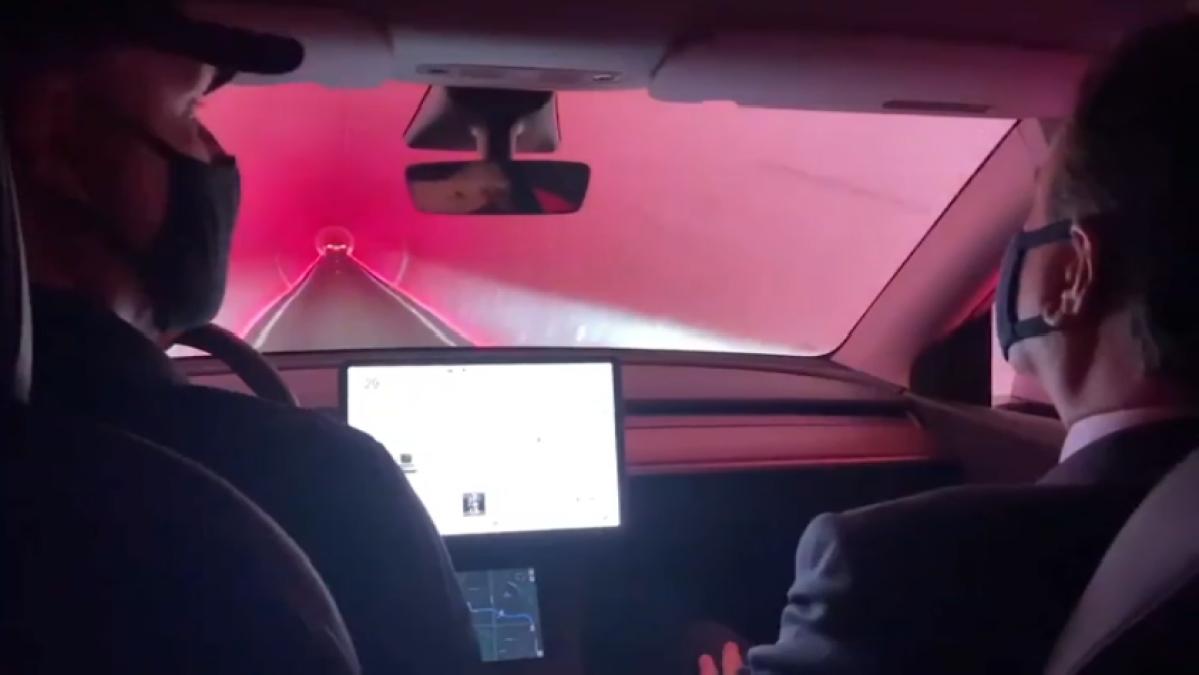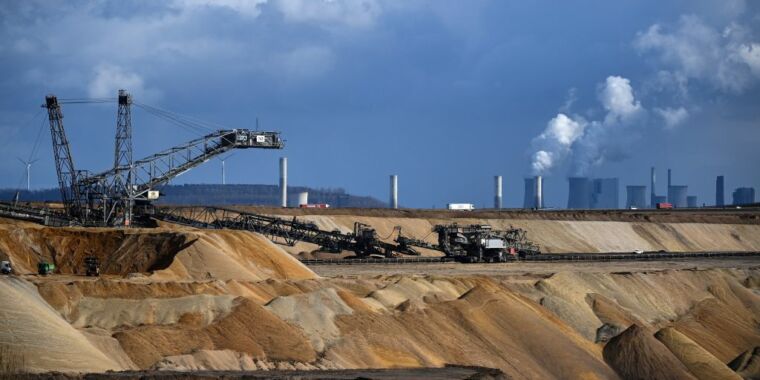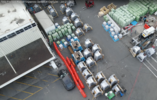Welcome to Tesla Motors Club
Discuss Tesla's Model S, Model 3, Model X, Model Y, Cybertruck, Roadster and More.
Register
Install the app
How to install the app on iOS
You can install our site as a web app on your iOS device by utilizing the Add to Home Screen feature in Safari. Please see this thread for more details on this.
Note: This feature may not be available in some browsers.
-
Want to remove ads? Register an account and login to see fewer ads, and become a Supporting Member to remove almost all ads.
You are using an out of date browser. It may not display this or other websites correctly.
You should upgrade or use an alternative browser.
You should upgrade or use an alternative browser.
Tesla, TSLA & the Investment World: the Perpetual Investors' Roundtable
- Thread starter AudubonB
- Start date
I dotn understand what moves price and I think I give up trying.
Seems like the casting machine isn't at 100% if this is accurate.
While the RealTesla subreddit is heavily biased against Tesla and has a very low signal to noise ratio, it is maybe unwise to just disregard the actual images being presented for analysis there. The first (undated) image shows 7 containers filled to various degrees with casts that are placed in a manner likely to deform or damage them, so they are likely rejects. Similarly about a half dozen are stacked directly on top of each other nearby. It's hard to tell, but there could be 60 - 80 rejected casts there.
The other photo (partially) shows 25 similar containers, pretty full with smaller, irregular metal parts, likely aluminum. There is also a structure described as a 'shredder', which it could be. No gigacastings are visible in the second photo. The post claims without much detail that this second group of containers hold about one week's worth of shredded gigacastings.
This January 21st flyover video
So what does that tell us about the scrap rate of the apparently single operational Gigapress?
It is given by the number of rejects per unit time, relative to the number of usable casts (plus rejects) per unit time.
The usable casts are probably moved to the assembly line ASAP - and not actually stored outside in the open, subject to contamination (dust, bird droppings, etc).
Especially in this initial phase, the processing of the rejects is less time critical. For an optimally working gigapress each reject would be recycled on the spot (after ensuring that it was not too contaminated by some foreign material), melted right back into the supply of molten alloy, avoiding any storage and minimizing consumption of fresh, raw material (even reducing heat loss). But maybe the recycling process is not that simple and rejects are (at this time) subjected to a slower, separate recycling process. It is also possible that during the initial phase, the gigapress is only fed with raw material that has a very limited fraction of reused alloy in it - to ensure the purity of the raw material going into the gigapress.
It thus seems reasonable to assume that the rejects are stored near the gigapress for at least as long as the usable casts - potentially significantly longer.
In the worst case, i.e. if both the not-visible (at most 40) rejects in the youtube video and 124 usable casts were produced in the same time, the gigapress would have a scrap rate of 25% (8 weeks ago). I think the scrap rate is less. It is possible that the reddit images have been cherry-picked, but at least we can see from the above youtube video an example where the containers with reject material contain not only gigacastings. We also see a container with non-gigacastings, so the scrapping/recycling process may be unified for different aluminum parts. So the second reddit image does not tell us much. But the scrap rate is probably significant and Tesla may still have been in the process of reducing it, that could explain why the video sees only one operational gigapress.
When Giga Nevada started making the 2170 cells there was also a certain scrap rate and it would fit in well with Tesla's (and SpaceX's) way to work to try to learn quickly from making (and fixing) mistakes.
This exercise convinces me that the concern in the reddit post is exaggerated - but also that there are people (being) convinced that Tesla's gigapress has a unprofitably high scrap rate. I find that notable.
PS. TL;DR: Nothing to see here, RealTesla is just noise misleading others.
Attachments
Last edited:
Mo City
Active Member
People who think robotaxis will cause an "overnight" change in behavior for most people are wrong. They don't represent most of us. So much so, you are arguing against a straw man.So I really like the idea of Tesla owning and operating Megapack installations for a guaranteed recurring revenue stream and not just an upfront sale. I really think this could be a huge driver of Tesla's growth if they can get past battery manufacturing restraints.
But I really don't see the paradigm shift in human behavior that will make robotaxi revenue be some game changer for Tesla. People like their cars and like the control of having it always there and available. I mean people drive around in huge SUVs when a compact car would make a lot more sense for a lot of reasons. They stick with ICE cars because they need it for long trips when they never drive more than 30 miles at a time.
There is a lot of resistance to even the idea of owning an electric car that is slowly being overcome, and that is just changing how you fuel it. The idea that people will give up their cars en masse to take an Uber is just not probable to me. What about a robotaxi is going to be so much more compelling than an uber? Don't have to talk to a driver?
There may be a generational shift as the technology matures and younger people are more likely to embrace the idea. But I haven't seen a single argument here or anywhere else that has me convinced that people are going to change their behavior overnight because robotaxis are now a thing. People aren't rational and changing human behavior has a lot of inertia.
On the other hand, if/when robotaxis happen, legalities/liabilities get resolved, safety fears are assuaged and costs decline to a fraction of what ride-sharing is now, a sea change will start occurring. If you don't believe me, just ask cable providers and landline phone companies. The movement will start with younger folks and gravitate upwards.
Robotaxis won't kill car ownership completely, but they will flip local transportation (including mass transport) upside down.
Eventually / = short period of timeCount Elon Musk in the "short period of time after Tesla" group. Elon has said that eventually everyone will have full self driving and robotaxis, and that Tesla's edge in self driving will only be temporary. So will Tesla's edge in batteries, powertrains, and charging networks. In fact, Elon says any edge in specific technology is temporary, and that the only durable advantage is for a company to innovate faster than competitors. "Moats are lame"
The investment case for Tesla is not that Tesla has a lead in FSD. It is that Tesla has the corporate culture, structure, and resources that gave it the lead in FSD.
I mean a few years to be clear, which is generous. Nobody else is even close right now. How can we think that Tesla is 3-5 years ahead in software, but that other companies are only say 2 years behind in developing FSD? Gene Munster figures 3 years is the number. I think that could be right. And as Mo City mentioned above, even if a competitor is ready 3 years later, how much longer will scaling take from that point?
As investors that should be just fine. Most of the gains should be when it's proven to work, tapering off as it actually becomes ubiquitous. (S curve)People who think robotaxis will cause an "overnight" change in behavior for most people are wrong. They don't represent most of us. So much so, you are arguing against a straw man.
On the other hand, if/when robotaxis happen, legalities/liabilities get resolved, safety fears are assuaged and costs decline to a fraction of what ride-sharing is now, a sea change will start occurring. If you don't believe me, just ask cable providers and landline phone companies. The movement will start with younger folks and gravitate upwards.
Robotaxis won't kill car ownership completely, but they will flip local transportation (including mass transport) upside down.
Last edited:
Knightshade
Well-Known Member
What some people don't understand is it isn't about being the "first mover". The real issue is mass deployment. Tesla is the only OEM capable of it, instantaneously.
This is why if FSD reaches Level 5 within a couple of years, the game is over. Tesla becomes to the auto industry what SpaceX is to the rocket industry.
Scalability is just as important in the autonomy race as actually reaching Level 5. One more point: Because Tesla is taking a completely different route than most others, copying them could take a very long time.
This assumes existing HW is sufficient for L5.
Tesla has already been wrong about that- several times. They might be again.
As to time to copy- there's really 2 major elements of that:
Copying the software framework-- that wouldn't take a massively long time. Many of the general concepts (including 4D birdeye views) already exist in others efforts, they just aren't primary/sole focus of the system as vision is for Tesla.
and
Copying the amount of data needed to train the system-- everyone points out nobody has anywhere NEAR the volume of data Tesla does.... which is absolutely true.
Part of that is because others aren't taking the same route they haven't seen a need to.
But given how much larger legacy OEM fleets are (including new car sales, ignoring existing cars entirely for them), they certainly COULD catch up to Tesla on data collection very quickly if they wished to invest to do so as far as having the proper sensors (and upload capability) in their cars.
If VW, for example, set up all new cars starting TOMORROW to collect data the way Teslas cars do, they'd have more miles driven collecting data in less than 1 year as Tesla has in the entire history of the FSD program.
Legacy mostly has not bothered- because generally their business model is "Pay some third party to design whatever new tech you want" rather than invest your own time and money to do it.
Teslas has been "Build whatever new tech you want yourself"
As long as Tesla doesn't have L5 yet, they can keep thinking it's not worth doing what Tesla does and waiting for Cruise or whoever to sell them something they can deploy on new cars.
But if Tesla DOES get L5 their way, legacy might realize they need to look a different way.
Which is why even Elon doesn't believe autonomy is a long-term moat for Tesla.
Mo City
Active Member
OT: Elon's brazen confidence in the still unopened Las Vegas tunnels is something to keep an eye on.
Miami Mayor Floats Privately Financed Tunnel System
City of Miami Mayor Francis Suarez returned a believer from a Las Vegas tour of Elon Musk’s Boring Company. Suarez’s pitch now to commissioners and the community at large expanded from a small tunnel under Brickell Avenue to an entire tunnel system running north-south through the city. Under...www.nbcmiami.com
"Suarez says the company estimates the price would be around $10 million per mile."
asburgers
Sell order in at $8008.5
Serious question regarding the casting waste. Can they be melted and re-used?
That's one of the advantages of casting, unlike stamping casting has in principle no waste. People with actual knowledge: Please elaborate on 'in principle'...Serious question regarding the casting waste. Can they be melted and re-used?
Pras
Member
Today seems like re-rebalancing. Recent favorites like commodities, small cap value, reopening (casino), are falling faster than large tech. Interesting how market’s mood swings in a matter of weeks.
Yes, they can. That's one of the advantages of casting.Serious question regarding the casting waste. Can they be melted and re-used?
TheTalkingMule
Distributed Energy Enthusiast
Feels like a swing away from value(oil), lets hope the other shoe drops soon and TSLA sneaks back up.Today seems like re-rebalancing. Recent favorites like commodities, small cap value, reopening (casino), are falling faster than large tech. Interesting how market’s mood swings in a matter of weeks.
The EU lockdown is certainly weighing on IWM and reopening plays. Market sentiment is a bit negative due to the prospect of a slower recovery. However, as ER season is right around the corner I expect that sentiment to turn around quickly toward winners. I'd take that over inflation fear any day of the week.
Ummm, Mike, remember those Michigan Dealership laws?This was referenced, but for non Twitter folks:
The thing that irks me here is how they can “reference“ the media to make their BS point and far too many people will believe them because “the media“....
(1) A manufacturer shall not do any of the following:
(r) Engage in conduct that meets all of the following:
(i) Materially affects a new motor vehicle dealer.
(ii) Is capricious, is not in good faith, or is unconscionable.
(iii) Causes material damage to a new motor vehicle dealer.
(s) Require, attempt to require, coerce, or attempt to coerce a new motor vehicle dealer to adhere to unreasonable performance standards that are not applied uniformly to other similarly situated new motor vehicle dealers.

Unpaid environmental damages from fossil fuels are a $600B annual subsidy
Consumers get most of the benefits of unpaid costs, but companies get a slice, too.
Interesting calculations for environmental costs of specific companies and countries. What I really want to know is are they taking the rampant soon to be inflation into account?
MTL_HABS1909
Active Member
There were some saying that what happened yesterday “wouldn’t stick”. That was cute.
Edit: Also a quick shoutout to those who told us the release of ARK’s new price target would send us to the moon LOL
Edit: Also a quick shoutout to those who told us the release of ARK’s new price target would send us to the moon LOL
Last edited:
TheTalkingMule
Distributed Energy Enthusiast
I'm loading up on 700c's for Friday. $4.50 now $3.75.....bargains.
Good luckI'm loading up on 700c's for Friday. $4.50 now $3.75.....bargains.
MTL_HABS1909
Active Member
Does anyone else find it suspicious that today was mostly a repeat of yesterday? Basically trading sideways most of the day until a huge push down during the last hour.
I admire your optimism but what makes you believe we won't pin between 650-680?I'm loading up on 700c's for Friday. $4.50 now $3.75.....bargains.
Does anyone else find it suspicious that today was mostly a repeat of yesterday? Basically trading sideways most of the day until a huge push down during the last hour.
Does not appear specific to Tesla. Following QQQ but unfortunately at 3x the down multiplier.
Tsla is moving along with nasdaq today at about 1x multiple so whatever. We will speed crash when Bond hits 1.5..and speed crash again once it hit 1.6 again. Don't worry..tech will just speed crash at any yield rate now!Does anyone else find it suspicious that today was mostly a repeat of yesterday? Basically trading sideways most of the day until a huge push down during the last hour.
Similar threads
- Locked
- Replies
- 0
- Views
- 3K
- Locked
- Replies
- 0
- Views
- 6K
- Replies
- 6
- Views
- 5K
- Replies
- 6
- Views
- 11K
- Locked
- Replies
- 27K
- Views
- 3M



